Shiny fictional metals ranked, from vibranium to Valyrian steel
There is one thing that all successful mega-franchises must have in common. It's a trope that's literally been around for centuries, and it stretches across every genre. It doesn't matter if you're writing a sword-swinging fantasy epic or rebooting a beloved sci-fi TV series or launching yet another superhero flick. It doesn't even matter if you have an A-list cast or dragons or swords or lasers that go pew-pew.
No, to truly be considered an elite franchise, there is only one thing you need: a super cool and super shiny fictional metal.
You know what I'm talking about. Every franchise has its own version: some sort of mysterious ore or alloy, complete with its own lore and an overly complicated backstory. No two fictional metals are identical, but all of them are shiny, all of them are rare, and all of them have some sort of ridiculous name. They tend to be impossibly strong and can withstand incredible force. Sometimes, they even have magic powers. (If you've got a super strong fictional metal that also glows? Hell yeah. That's the good stuff.)
Weird metals have always been a staple in fiction, whether it's ancient tales of alchemists turning iron into gold, or Plato describing orichalcum in the lost city of Atlantis. But between Game of Thrones, Lord of the Rings, Star Wars, and Marvel, metals are everywhere right now. Fortunately, EW is here to help you wade through the periodic table of pop culture.
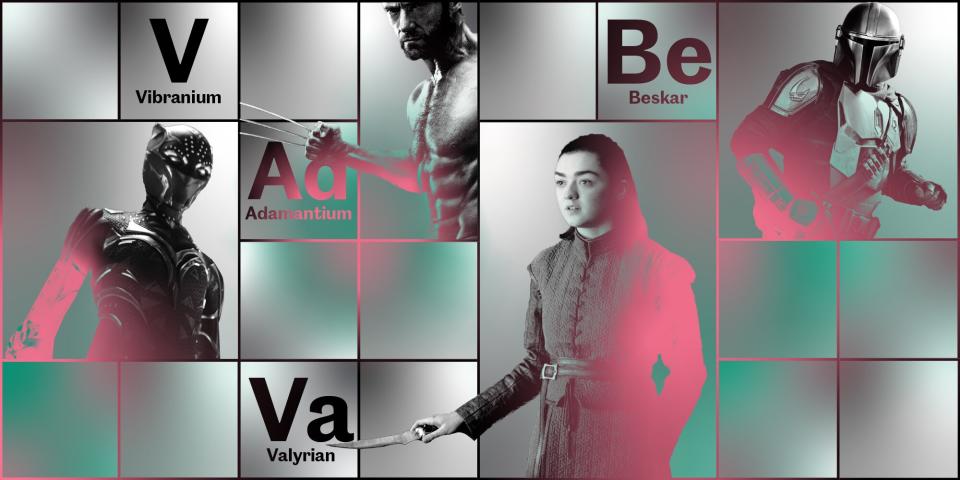
Photo illustration by Alex Sandoval The periodic table of pop culture
Here, we've taken on the task of ranking all the best fictional metals. Obviously, it would be impossible to name and rank every single metal across film, TV, books, comics, and video games, so this is not a complete and exhaustive list. Instead, it's a roundup of some of the most notable examples across modern pop culture.
This is also a very unscientific ranking. We're judging metals based on a few key questions: Is it shiny? Is it rare? And above all, is it cool? For a metal to be included for consideration, the only real criteria is that it has to be fictional, and it has to be a metal or metallic alloy/mineral.
So, grab your vibranium shield and your Valyrian steel dagger, and join us as we present EW's thorough and completely unimpeachable ranking of fictional metals.
8. Eternium (<em>Black Adam</em>)
You could fill an entire periodic table with all of the weird elements and metals in the DC Universe. The crystal kryptonite is easily the most famous, but there are dozens more, ranging from the gravity-defying Nth metal to the not-so-originally named Batmanium and Supermanium. (Throughout the years, Wonder Woman's bracelets alone have had, like, 12 different origin stories, and depending on the source material, they've been made out of metals like Amazonium, Eighth Metal, or Feminum.)
DC's most recent film release, Black Adam, focuses on an entirely different metal: eternium. Much of the film's plot centers on this glowy ore, which is mined in the fictional country of Kahndaq and used to create evil weapons or demonic tiaras. Black Adam introduces a few interesting ideas about colonialism and how the struggle over natural resources can enable oppressive regimes, but eternium's characteristics are pretty poorly defined. Mostly, this just feels like a boring rip-off of other, more interesting metals. Next!
Cool verdict: It glows! But overall, meh. Could be cooler.
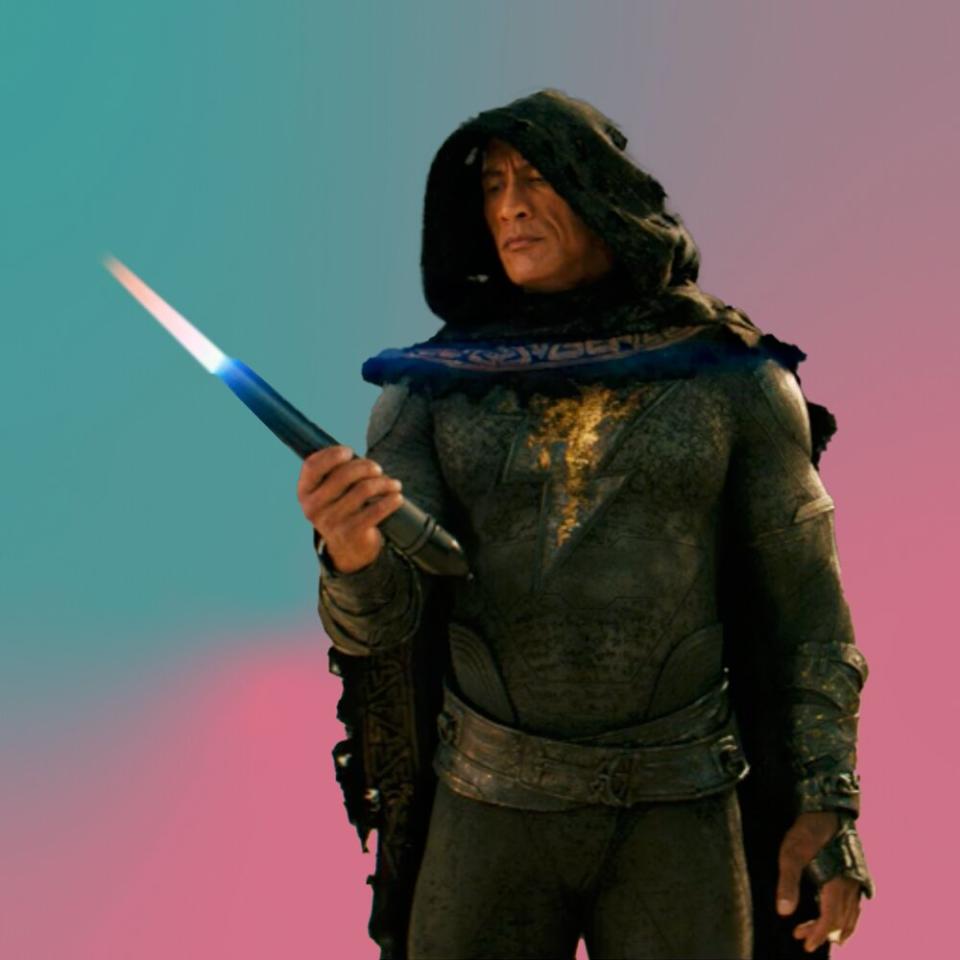
7. Adamantium (<em>X-Men</em>)
Look, adamantium is very cool in Marvel comics. This fancy alloy made its debut in the 1960s, and it's best known for being the metal used to create Wolverine's spiky claws. Its exact composition is a heavily guarded secret, but it's manmade and virtually indestructible. The word itself also technically predates Marvel, and the idea of "adamantium" has popped up in countless other series.
But despite that long and illustrious history, adamantium has taken a bit of a backseat in recent years. Certainly on the big screen, this steel-like alloy pales in comparison to vibranium, its cooler and flashier Marvel big brother. (More on that in a minute.)
Cool verdict: Used to be cool, but has since been upstaged by other cooler metals.
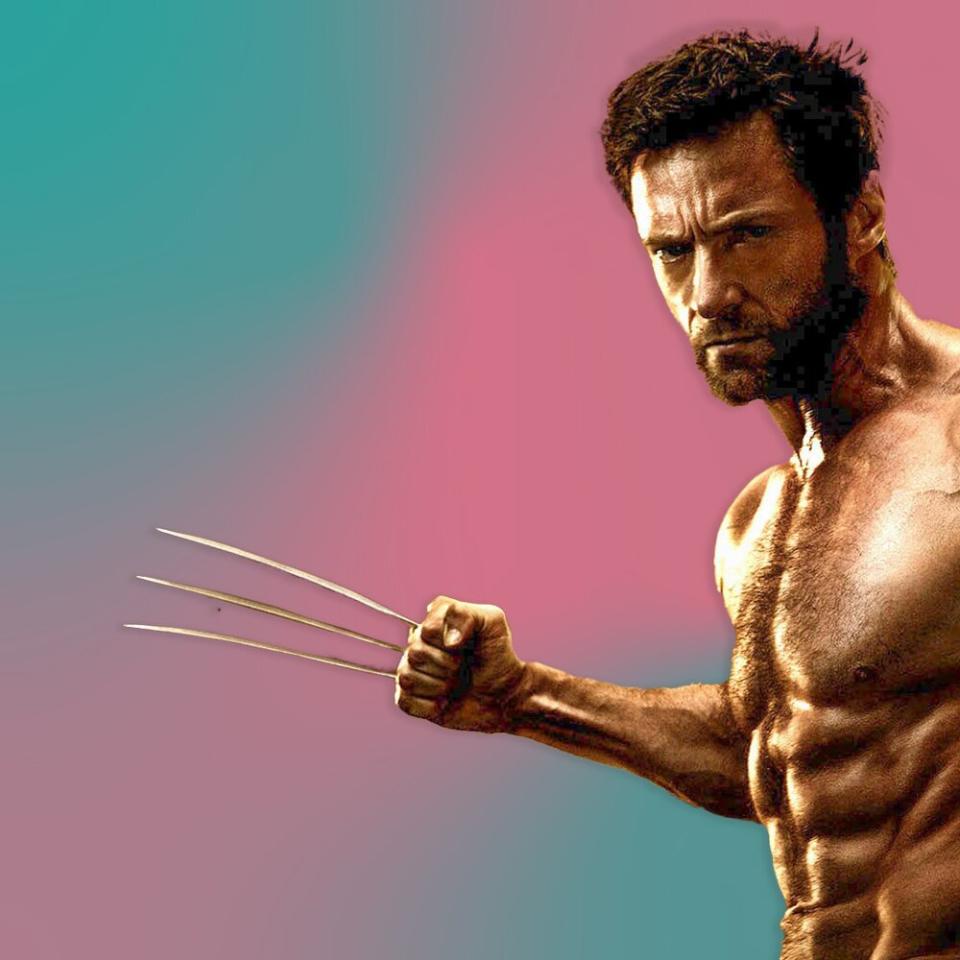
6. Dalekanium (<em>Doctor Who</em>)
If there's one thing Doctor Who is good at, it's spouting made-up science and absurd-sounding words. After all, this is the series that gave us gems like "reversing the polarity" and "wibbly-wobbly timey-wimey stuff." So of course it has a ridiculous metal of its own, complete with its own ridiculous name.
We don't know a lot about what Dalekanium is made of or where it comes from, but it's used to create the pepperpot-like shells that encase the Doctor's most notorious foe. We do know that Dalekanium is bulletproof, and the Daleks often use it for nefarious purposes — like that time in 1930 where they strapped Dalekanium panels to the Empire State Building to try and turn people into human-Dalek hybrids. The Doctor had to team up with Andrew Garfield and a pig man to try to defeat them. You know, typical Doctor Who stuff.
Cool verdict: Cool if you're British.

5. Valyrian steel (<em>Game of Thrones</em> and <em>House of the Dragon</em>)
Nothing cuts like Valyrian steel. In Westeros, owning a weapon made from this valuable metal is the ultimate status symbol — especially because there's only a finite amount of it left in the world. Ancient smiths knew how to craft it, but that knowledge has since been lost to time, so if you're looking to obtain some, you'd better find someone who's willing to lend you an ancestral heirloom. (Notable examples include Jon Snow's sword Longclaw and the catspaw dagger that Arya Stark uses to skewer the Night King.)
Interestingly, Valyrian steel has roots in real history: Author George R.R. Martin took inspiration from Damascus steel, a strange and ancient material that's fascinated historians for centuries. Like the real-life metal it's based on, Valyrian steel is known for its distinctive swirled pattern, and it never tarnishes, even after thousands of years. It's also excellent for stabbing White Walkers, which is a plus.
Cool verdict: Pretty cool. Especially if you need to battle an undead opponent and try to prevent an endless winter.
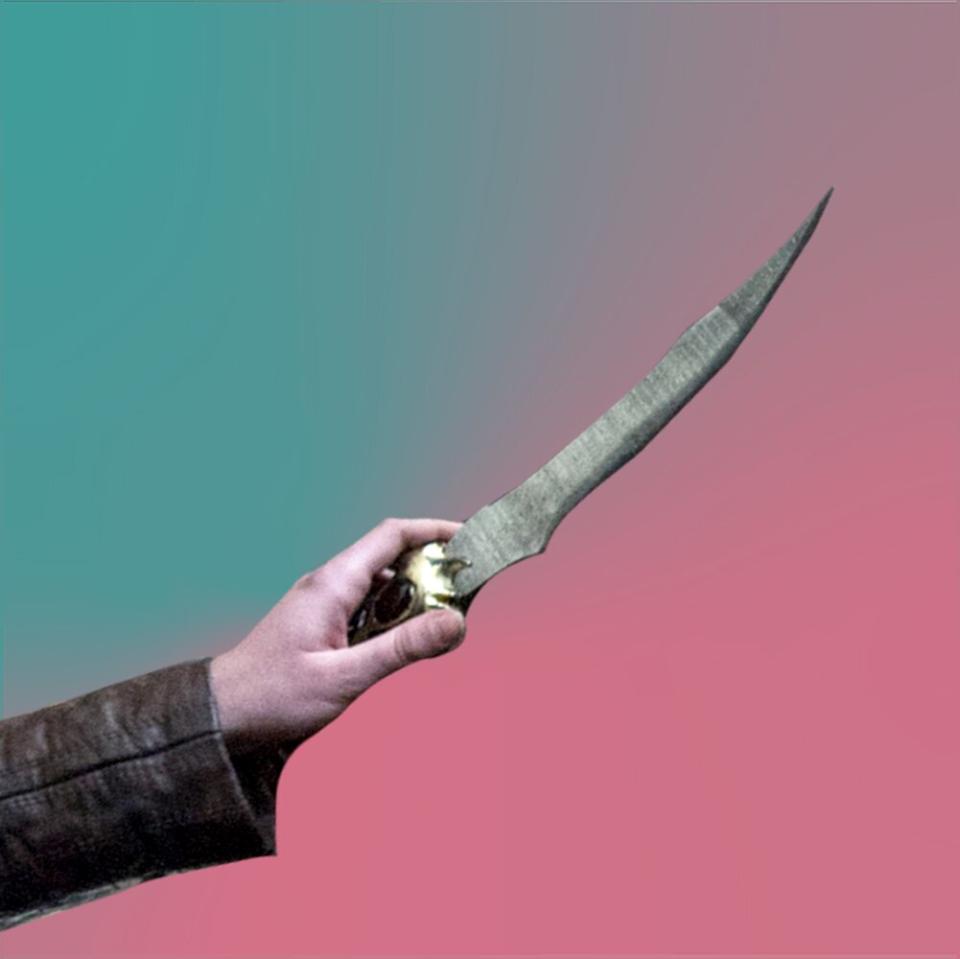
4. Unobtanium (<em>Avatar</em>)
This shimmery blue ore gets bonus points for having one of the stupidest names on this list — a name that's sort of based in reality. Engineers and scientists use the word "unobtainium" (with the extra i) to describe any theoretical material that either a.) doesn't exist or b.) is impossible to get. It's a concept that pops up throughout fiction and science, but the best-known example is in James Cameron's Avatar, where humans bulldoze the idyllic planet Pandora to try to scoop up as much as they can.
As pop-culture materials go, unobtanium itself isn't particularly memorable. (It's blue, it's shiny, and it's… used in space travel? Or something?) But Cameron gets props for infusing his billion-dollar mega-franchise with themes of colonialism and environmentalism. Plus, unobtanium is just a fun word to say. Say it with me now: unobtanium!
Cool verdict: So ridiculous it's kind of cool?
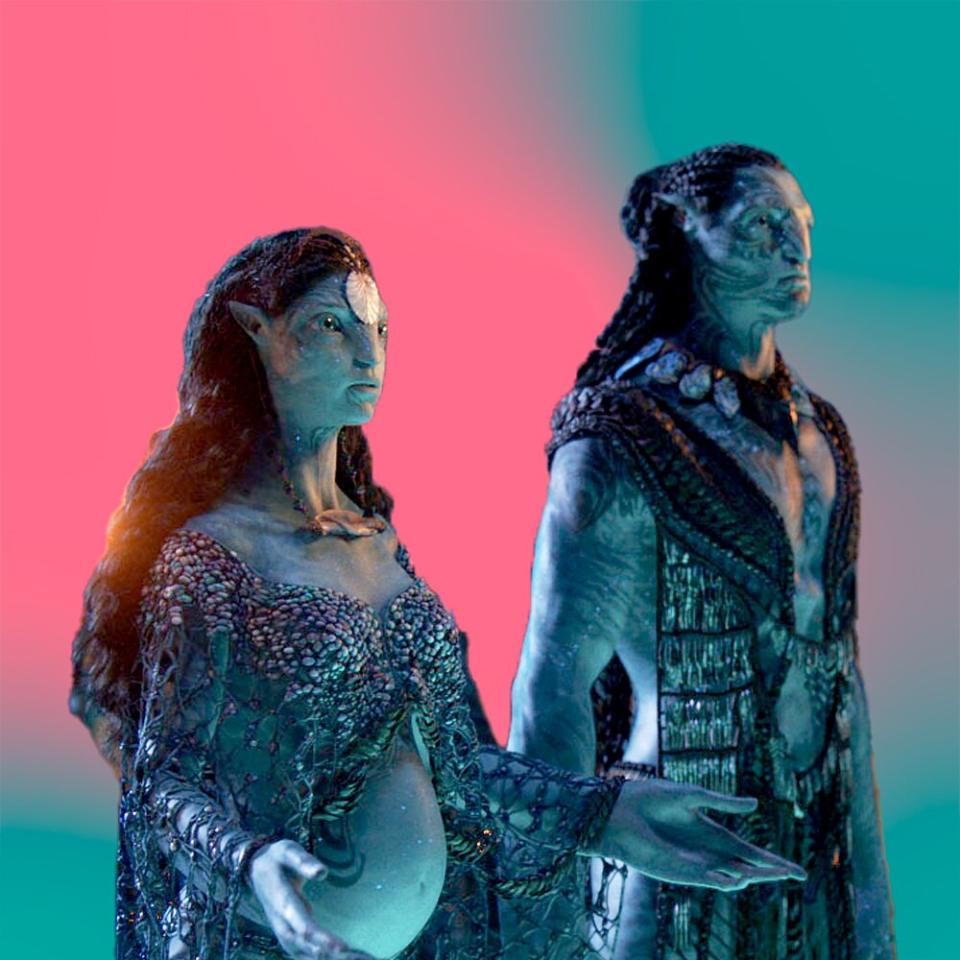
3. Beskar (<em>Star Wars</em>)
There's a reason Mandalorians have created a whole cult with elaborate rituals regarding this shiny silver metal. Blaster fire can't penetrate it, and it can even stand up to lightsaber strikes. A fancy metal that repels lightsabers is the kind of goofy nonsense you'd make up as a seven-year-old playing with Star Wars action figures in your backyard. And it kind of rules.
But despite beskar's many practical uses, this reflective mineral also makes for one hell of a fashion statement. Can you blame Pedro Pascal's Mandalorian for dressing in head-to-toe silver armor, swaggering around like some kind of chic, gun-slinging Tin Man?
As an added bonus, it's fun to listen to Werner Herzog say the word "beskar." It's almost as fun as hearing him say "baby."
Cool verdict: Pedro Pascal makes everything cooler, so yes, this is very cool.

2. Mithril (<em>The Lord of the Rings</em> and <em>The Rings of Power</em>)
Perhaps the most famous fictional metal — and the one that's been copied a thousand times over. Fantasy writers have been cribbing from J.R.R. Tolkien for decades, and mithril is no exception, with knockoff versions popping up everywhere from World of Warcraft to the Final Fantasy series. But the original is still the best, an extremely rare ore that's "as light as a feather and as hard as dragon-scales." In Elvish, the word "mithril" roughly translates as "glittering grey steel," an apt name given its shiny silver appearance and impossibly strong constitution.
Mithril plays a key role throughout The Lord of the Rings and The Hobbit, and the most famous example is the chainmail shirt that Thorin Oakenshield gives to Bilbo Baggins (who in turn passes it on to his nephew Frodo). Mining for mithril is also a major plot point in Amazon's TV series The Rings of Power — which I'm sure will totally turn out fine and definitely not awaken an evil creature slumbering in the fiery depths of Khazad-dûm.
Cool verdict: Extremely cool, especially because it's the inspiration for practically every other fictional metal.
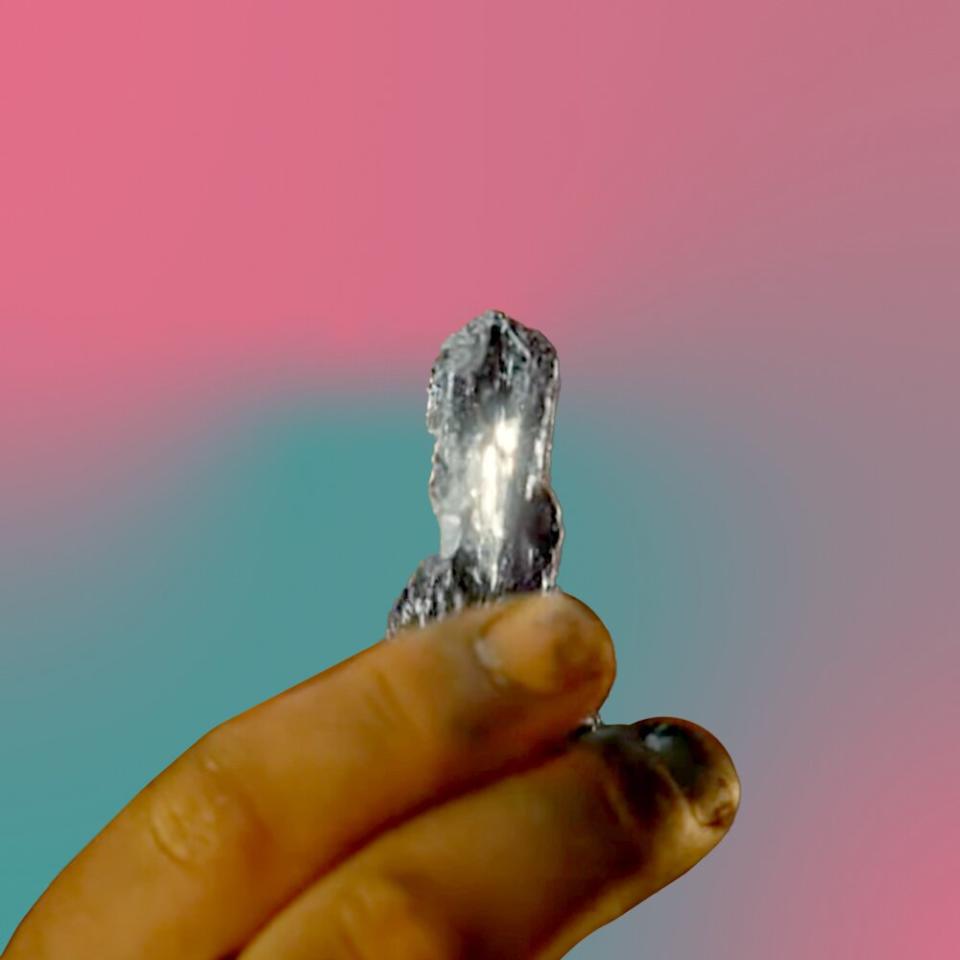
1. Vibranium (<em>Black Panther</em> and the Marvel Cinematic Universe)
At first glance, vibranium doesn't look all that different from the other metals on this list. This fictional Marvel ore has many of the same qualities we've seen over and over again: It's extremely strong, extremely light, and extremely rare. (It can also absorb energy, and vibranium-enriched soil can grow plants with magical powers.) But vibranium's broader significance is less about what it can do and more about what it represents. In the Marvel Cinematic Universe, this interstellar ore isn't just a cheap plot device but a powerful storytelling tool, one that raises thoughtful questions about race, technology, history, and power.
Vibranium has long been a staple in Marvel comics, ever since Stan Lee and John Romita introduced it in a 1966 Daredevil issue. Since then, it's become a household name, especially thanks to on-screen appearances in nearly every corner of the Marvel Cinematic Universe. Steve Rogers' shield? Vibranium. Vision's body? An organic vibranium compound. Bucky Barnes' arm, Sam Wilson's wings, Ultron's metallic shell? You guessed it: Vibranium, vibranium, vibranium.
But the real story of vibranium is the story of Wakanda, the legendary African nation blessed with an abundance of it. Per Marvel lore, this extraterrestrial mineral first came to earth when a meteorite crash landed in Wakanda, permanently reshaping the terrain and leading to advanced technological discoveries. (The Black Panther sequel, Wakanda Forever, reveals that a second meteorite crashed in the ocean, helping to shape the formidable undersea kingdom of Talokan.) Vibranium doesn't just inform Wakanda's technological abilities but its very culture, and the result is a compelling symbol that sits at the intersection of both magic and science. In a pop-culture landscape crowded with shiny swords and impenetrable armor, vibranium stands as the most marvelous metal of all.
Cool verdict: The coolest.
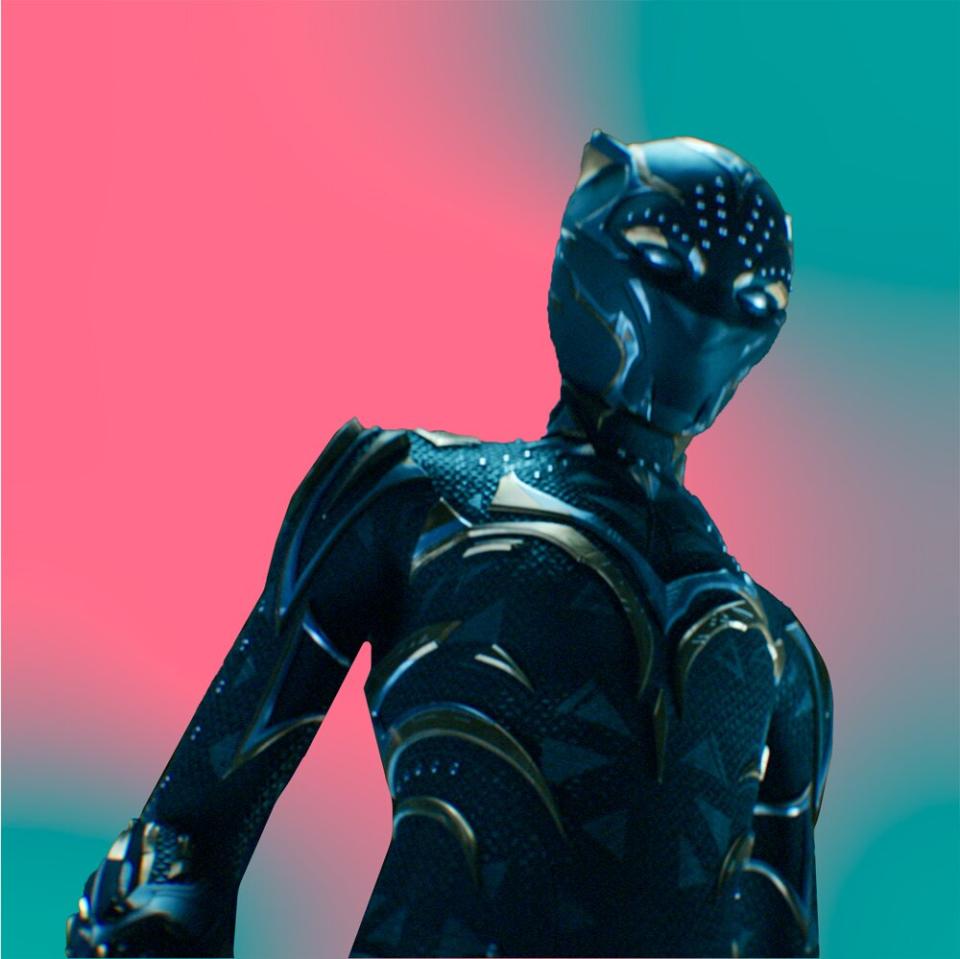
Related content:


